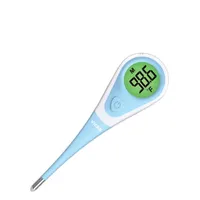Best thermometers in 2025: tested and rated
These are the best thermometers you can find right now
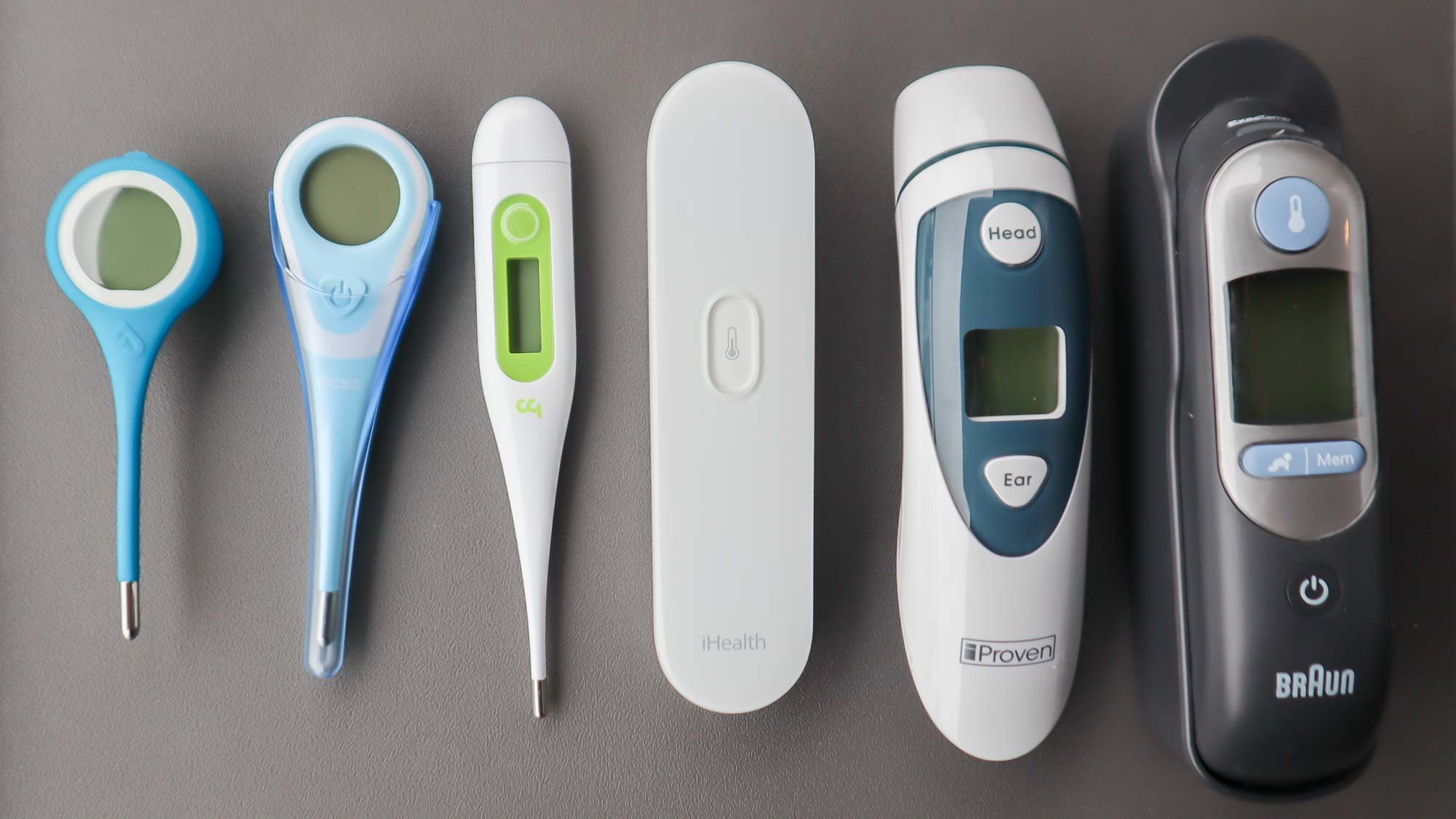
Whether you’ve got young children or not, no medicine cabinet should be without one of the best thermometers. They should act as a reliable indicator of whether someone’s temperature is raised and if they require medical treatment.
But, rather than buying multiple thermometers to suit every person in your household, you need a thermometer that is easy to use on babies, young children and adults. It should also give a fast and reliable reading, so you’re not distressing the patient or taking multiple readings to find an average.
To help you decide which thermometer to buy, we’ve carefully selected a range of thermometers to test and recommend. With this insight, we’ve selected the best overall and placed them into categories matching their benefits. The iHealth No-Touch Forehead Thermometer PT3 is the best thermometer overall, while the Femometer Digital Thermometer (DMT 2032) was selected as the best budget device, retailing for under $5.
The quick list
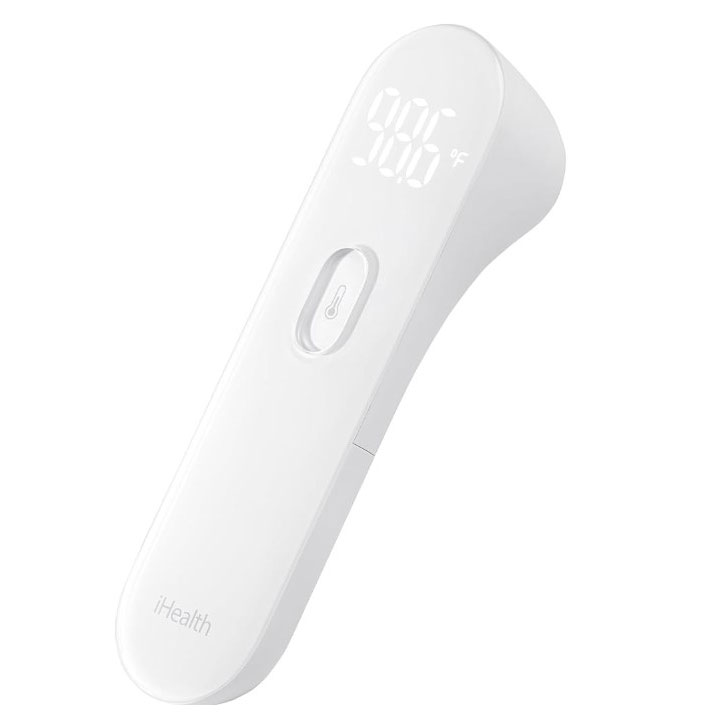
This no-touch thermometer is the best we tested and delivers results quickly for babies, infants and adults, by simply placing the thermometer on a forehead. It’s easy to use, affordable and is quiet, so won’t wake a sleeping baby.

The Femometer digital thermometer is a great budget purchase, plus it's compact and easy to use, although you may be waiting a while for the reading. It works in a similar way to a traditional thermometer and is placed under the tongue.
Read more below
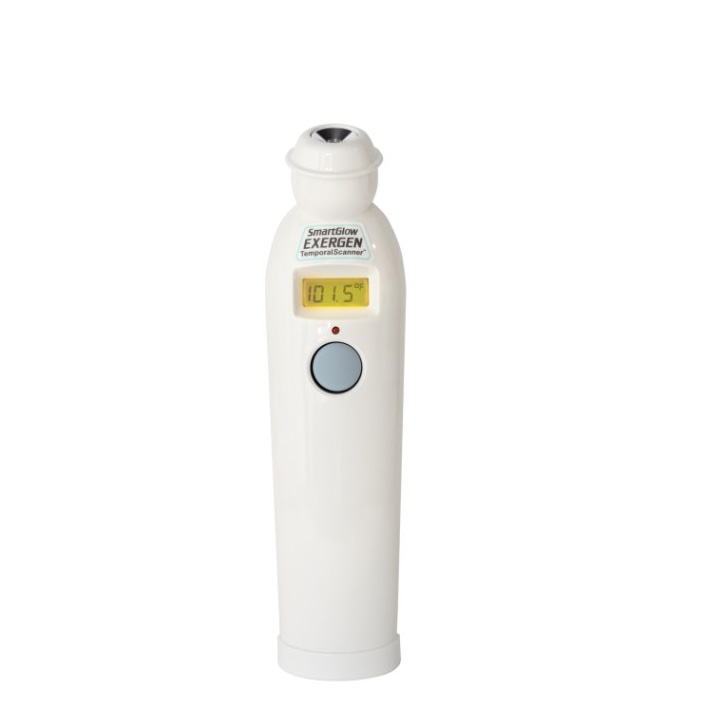
This temporal thermometer allows you to take a temperature without any fuss, and is easy to use on all age groups, although it's non-invasive nature is particularly good for children. It also features a loud or quiet mode and a memory function.

This smart thermometer allows you to record multiple patients' recordings over time and can be used with an app, if desired. It makes it a good choice for families and only takes 8 seconds to take a reading, and the app will tell you if you’ve removed it too early.
Read more below

This digital thermometer uses infrared technology to take readings from the ear and forehead, which it delivers in two seconds, making it a good choice for infants. It also beeps and flashes a red warning light if the temperature is too high.
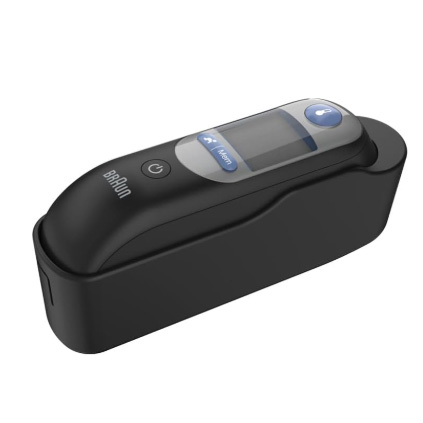
This ear thermometer is quick to use, and makes it ideal to use on children without causing them distress. It also features color-coded age-precision readings, to help you identify a fever in infants. However, you will need to purchase disposable lens filters.
Meet our experts
About us
Why you can trust Tom's Guide

I’m a staff writer at Tom’s Guide on the Homes team, but am first and foremost a mum. I have two boys, who are now in their 20s and have been through the normal anxieties of raising a family. From teething pain and high temperatures to asthma attacks, colds and Covid, my household has had its fair share of illnesses. I’ve always relied on having a reliable thermometer in my medical box to monitor temperatures easily and accurately, to indicate when they can be cared for at home, or when I need to call in a doctor. With parents in their 80s, I also have the experience of finding the best thermometers for older adults, because whatever your age or situation, finding the best thermometer to suit your needs will reduce the amount of distress, and give you a reading without unnecessary trauma.

Dr. Michael Genovese is a Physician and Chief Medical Advisor at Ascendant New York. With expertise in psychiatry, addiction medicine, and law, he is dedicated to advocating for individuals and families affected by addiction and co-occurring disorders. Dr. Genovese provides compassionate, multidisciplinary care to support their recovery and well-being.

Abbas graduated as a pharmacist in 2013 and spent the first 3 years working for high street multiples, including a senior management role with the largest multinational pharmacy in the UK. In 2017, he qualified as an independent prescriber, spending time working in a primary care setting. He then assumed a consulting role within the British National Health Service, providing advisory services on cost savings and clinical efficiencies. He has been within Chemist Click since the very start and continues to play an integral role within the team.
The best thermometers you can buy
Best overall
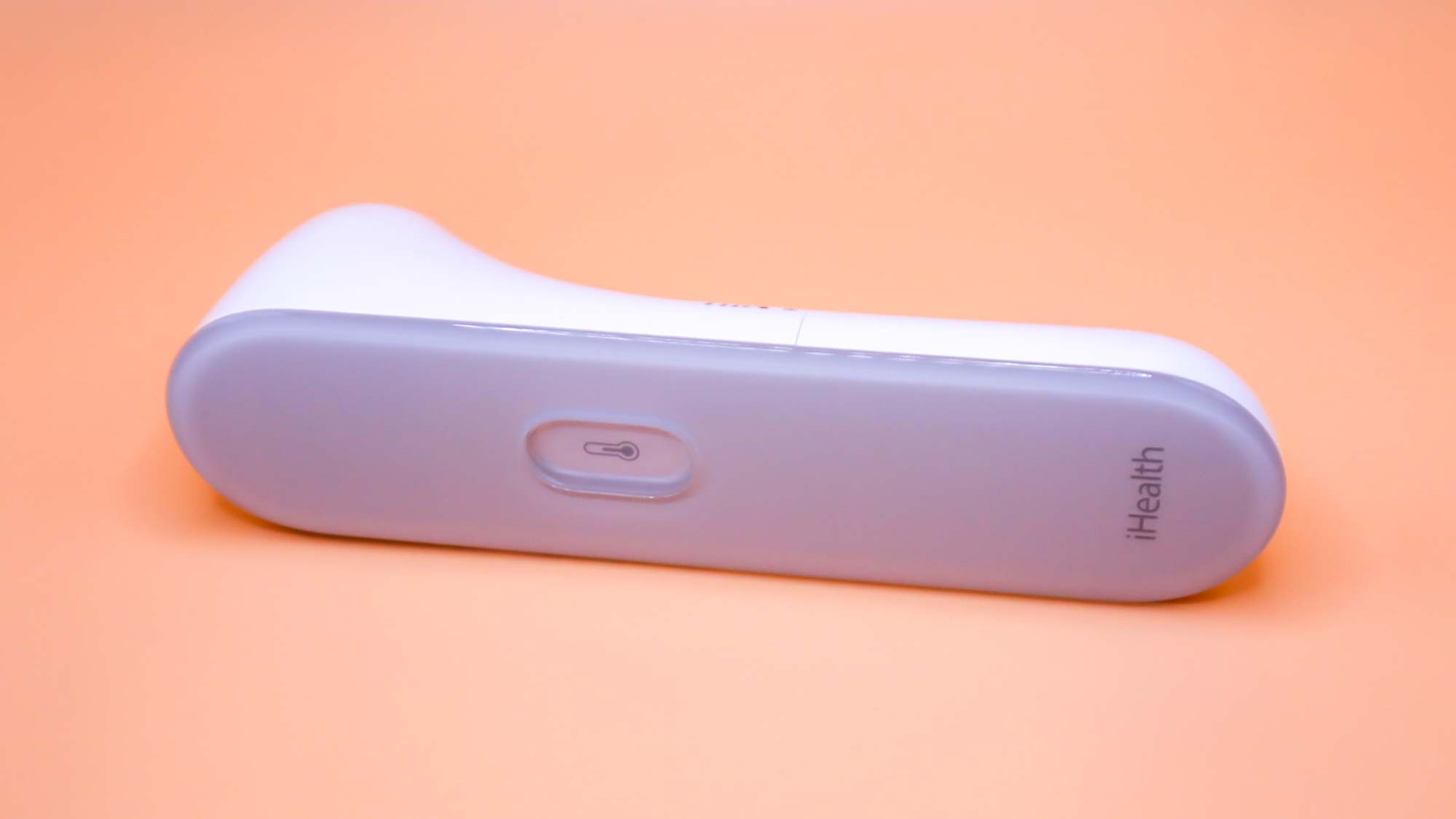
1. iHealth No-Touch Forehead Thermometer PT3
Our expert review:
Specifications
Reasons to buy
Reasons to avoid
After extensive testing, the iHealth No-Touch Forehead Thermometer PT3 is our top choice for a no-touch thermometer — it delivers results within a second with an easy-to-read display.
This thermometer uses infrared sensors to measure the temperature of the forehead, and it can be used on babies, children, and adults. Just scan the center of someone’s forehead to get a temperature reading, cued by a vibration.
This thermometer is intuitive to use — we didn’t have to rely heavily on the instruction manual. It’s the fastest by far, and it’s the one we’d choose if we needed to quickly take a temperature and report it.
One con is that the thermometer only recalls the last reading, so you’d need to come up with your own system for tracking temperatures over time. Still, this is the best thermometer for its price point, ease of use, and no-touch design.
Best value


2. Femometer Digital Thermometer (DMT 2032)
Our expert review:
Specifications
Reasons to buy
Reasons to avoid
The Femometer Digital Thermometer is easy enough to use, and it’s hard to beat at this price point. Simply press the power switch, place it under your tongue, wait for a beep, and your temperature is ready.
The thermometer will display “Lo” if the temperature is lower than 89.6° and “Hi” if the temperature is above 107.6°, which leaves a pretty large range for a healthy temperature.
This thermometer also has a waterproof tip, making it easy to clean and reuse, and a plastic cover for storage. You can also easily convert from Fahrenheit to Celsius as needed.
However, on average it took 57 seconds to display a reading, and there’s no backlight, making it harder to take temperatures in low light.
Best for ease of use

Reasons to buy
Reasons to avoid
Slowly swipe the Exergen thermometer across your forehead and get an instant reading via its infrared technology. While I’ve always liked using an ear thermometer, I like how the Exergen thermometer is non-invasive, meaning there’s no need for the added expense and waste of disposable caps; you just need to disinfect the lens filter after use.
While you can use it on yourself and still hold the device and push the button to take a reading at the same time, it’s super easy to use on young children, especially if they are distressed with a fever.
It also takes the guesswork out of knowing whether a temperature is too high or low, and displays ‘Hi.A’ or ‘LO.A’. I found this a great bonus, especially if you are unsure whether to seek medical help.
I also liked how you can change the sound level from loud to quiet — particularly helpful if you are monitoring the temperature of a sleeping child.
Read our full Exergen Temporal Artery Thermometer review
Best for families
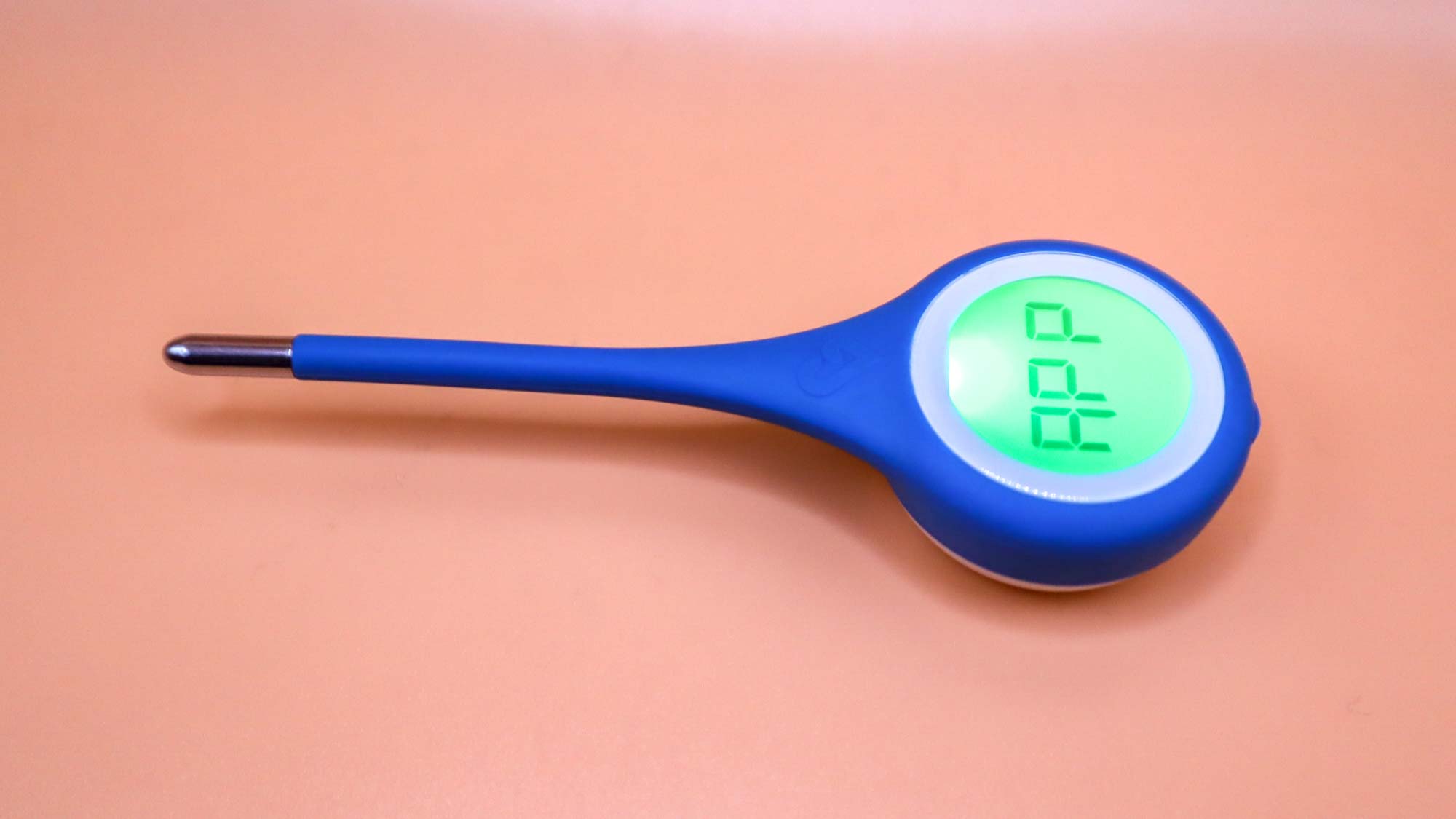
4. Kinsa QuickCare Smart Digital Thermometer
Our expert review:
Specifications
Reasons to buy
Reasons to avoid
If you’re looking for a thermometer that can track multiple patients at a time, this is the one for you. The Kinda Quickcare is a Smart digital thermometer takes an average of 8 seconds to take a reading as claimed, which is a little slower than the iHealth No-Touch Forehead Thermometer, and it can be used in the rectum (rectal), mouth (oral) or armpit (axillary).
It’s pretty clever as well — if you take the thermometer out of your mouth too early, the app will tell you to try again.
The Kinsa Quickcare thermometer pairs with the free Kinsa mobile app that’s available in the App Store or Google Play, though the app is not required to use the thermometer. We found it very easy to set up on an iPhone, as well as take a temperature, and add any symptoms we may have been feeling. You can add multiple users on the app, and it will create a timeline of all your past temperature readings, and symptoms that can be shared with caregivers or doctors as needed.
For children that don't like having their temperature taken, the app features an 'Ellie the Elephant' animation to keep them still, ensuring an accurate reading.
Best multi

5. iProven DMT-489
Our expert review:
Specifications
Reasons to buy
Reasons to avoid
The iProven thermometer can scan the forehead from temple to temple, and it can also take your temperature via the ear using the ear probe with a removable cap. It uses infrared technology to measure radiation from the eardrum or forehead and provides a reading within two seconds.
Although it’s not completely contactless like the iHealth thermometer, it still takes readings quickly, which makes it a good choice for babies and children.
The forehead temperature readings were consistent and displayed within a few seconds, however we struggled to get readings with the ear probe at times and had to keep moving it around until it worked. This isn’t necessarily a bad thing since we only got a reading when it was placed properly, but we would have liked more guidance on how to orient it correctly for accurate readings. If the temperature is high, the iProven thermometer beeps three times and flashes a red warning light. Otherwise, it has a green display for a normal temperature. Overall, this is a simple-to-use ear and forehead thermometer that’s worth its price, which is why it’s one of the best thermometers.
Best for infants
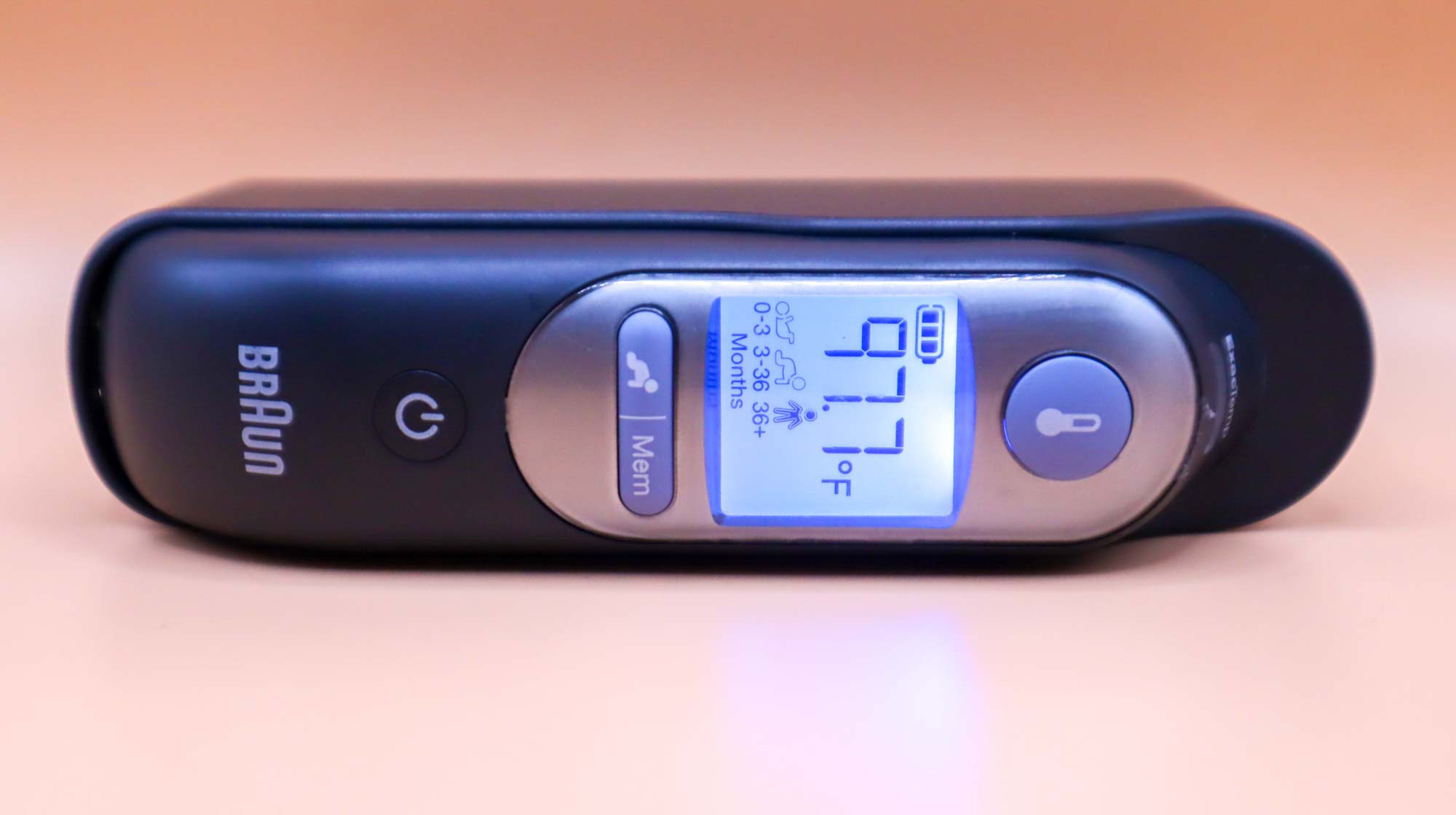
6. Braun ThermoScan 7
Our expert review:
Specifications
Reasons to buy
Reasons to avoid
The Braun ThermoScan 7 uses infrared technology to quickly take your temperature via the ear, measuring the heat generated by the eardrum and surrounding tissue. It comes with disposable lens filters which should be changed with every use — this can quickly mount up the price.
It also stores the last nine temperature readings (useful if you’re tracking your temperature over a period of time), which can be accessed by pressing the “Mem” button. The Age Precision feature provides a color-coded reading based on different levels of fever by the selected age group (0-3 months, 3-36 months or 36 months+).
Overall, this thermometer is easy to use — all we had to do was add a lens filter, select the appropriate age range, and scan our ear. The lens filters make it easy to use the same thermometer on the whole family, but we would prefer to use alcohol to clean the probe between uses instead to lower costs and waste. The color display (green, yellow, or red) quickly gave us a sense of whether our temperature was normal or high.
Also tested
While we tested a range of thermometers, not all of them made the final cut, despite doing a decent job.
However, if you're still looking for an alternative to suit your needs, check out the thermometer below.
The Vick ComfortFlex digital thermometer is light and compact and has a rubber probe for greater comfort. The results are color-coded, which makes results easy to interpret. You can also recall the last reading using the memory feature.
How we tested the best thermometers
To test each thermometer, we started off by reading through the manual to learn the ins and outs of the design, including how to take temperature, change the reading from Fahrenheit to Celsius, and details on how the readings will be displayed. From here, we took three temperature readings and compared the speed and consistency, assessing the memory recall feature if there was one.
We considered the display, checking for a backlight so the temperature could be easily seen at night or in a dimly lit room. We factored in visual cues as well, such as indicators for a low versus high temperature reading with a color display or warning sound. We timed how long it took to reach the temperature reading, keeping in mind that a fussy child may struggle to hold their breath for a significant period of time if someone took their temperature orally.
These thermometers vary in the location from which they can take temperature, from the ear or forehead (or both) to the mouth, armpit, or rectum. For the latter category, we considered the comfort of the probe. We considered the inclusion of additional nice-to-have features as well like a companion app, age-specific guidance, or the inclusion of lens filters. Lastly, we considered how many readings could be stored, which may be more beneficial if you’re monitoring symptoms over time. However, only the Kinsa thermometer offered a timeline to track the temperatures of multiple people, which is ideal if you live in a large household.
| Row 0 - Cell 0 | Location | Dimensions (inches) | Battery | Water resistant | Lit display | Silent mode | Fever alert | Memory | Displays in Fahrenheit/Celsius |
iHealth No-Touch Forehead Thermometer PT3 | Forehead | 1.5 x 1.3 x 5.4 | 2x AAA | No | LED | Yes | No | Yes | Yes/Yes |
Femometer Digital Thermometer (DMT 2032) | Oral/axillary/rectal | 5.9 x 2.1 x 0.8 | CR1632 | Yes | LCD | No | No | Recalls last reading | Yes/Yes |
Exergen Temporal Artery Thermometer TAT-2000C | Forehead/Behind ear | 6 x 8 x 2 | 1 x 9 V | No | LED | Yes | Yes | Yes | Yes/Yes |
Kinsa QuickCare | Oral/axillary/rectal | 5.7 x 3 x 1 | CR2032 | Yes | Yes | No | Yes | Yes | Yes/Yes |
iProven DMT-489 | Forehead/ear | 1.8 x 1.7 x 6.1 | 2x AAA | No | Yes | No | Yes | Yes | Yes/Yes |
Braun ThermoScan 7 | Ear | 5.7 x 1.3 x 2.1 | 2x AA | Yes | Yes | No | Yes | Yes | Yes/Yes |
Digital vs infrared
There are two main categories of thermometer: digital-stick and infrared. (The old glass models containing poisonous mercury have been phased out, but you can still find a few containing dyed-red alcohol.)
A digital-stick thermometer is probably what's been stashed in the back of your medicine cabinet for the last decade. It makes physical contact with the body and can take temperatures from the mouth (oral), the armpit (axillary) or the bottom (rectal).
Digital-stick thermometers are slower to give a temperature reading than their infrared counterparts and have fewer features, but they're accurate, affordable and work for all ages.
Infrared thermometers measure the heat your body emits, generally via the forehead or ear, by reading infrared light. These give results almost instantaneously and are more comfortable for young kids, though not recommended for newborns. (Readings from a rectal thermometer are more reliable, and with babies, reliable readings are key.)
Infrared thermometers tend to have more features than digital-stick models, which means they're usually also pricier. Some are specifically designed to read forehead temperatures, others are designed for ear readings, and some can handle both.
How to choose the best thermometer for you
There's plenty of advice around what to look for when buying a health thermometer for your home. Consider whose temperature you'll be taking, as well as which features — fever alerts and app integrations, for example — could make dealing with a sick kid or partner a little bit easier.
Your first step to choosing the best thermometer is to determine which method you prefer for taking temperatures. If you have a newborn — or if you're looking for an inexpensive option for the adults in your home — a digital stick thermometer that can be used for oral, rectal or axillary readings should do the trick.
If you have toddlers or children who are averse to holding their breath, a forehead, ear or dual-mode device is likely a better fit.
The thermometers which feature in our list fall into three main categories:
Oral thermometer: This list includes a few digital thermometers, which can take temperature orally, rectally, or by armpit. Some thermometers also have a companion mobile app to track temperature over time.
Ear thermometer: Tympanic thermometers are inserted into the ear canal, making it easy to get fast and accurate readings. The one drawback is that they aren’t recommended for use in infants under 6 months old and need to be positioned properly for accurate results.
Forehead thermometer: Forehead thermometers use infrared sensors to take the temperature from your forehead. We tested designs that were contactless as well as some which need to be swiped across the forehead, such as Exergen's Temporal Artery Thermometer.
Here are a few additional factors to weigh when determining which thermometer is right for your family.

- Display options: Look for thermometers that have large, easy-to-read digital displays. A backlight is helpful if you'll be taking temperatures at night in dark bedrooms.
- Fever alerts: Many of the devices we reviewed have color-coded (usually red, yellow or green) displays to indicate that you have a fever or your child does. This helps you quickly identify elevated temperatures.
- Silent mode: A few devices let you silence beeps and alerts, which is helpful if you're dealing with sick, cranky or sleeping kids who may be bothered by unnecessary noise.
- Memory storage: Most thermometers retain at least one recent reading — a helpful option if you want to track a fever over time.
- Age-specific settings or smart features: These are more nice-to-haves than necessities, but app syncing and custom fever alerts by age add some ease to your temperature-taking process.
How much should you spend on a thermometer?
Entry-level thermometers start from just $6, but the price can range up to $60 or more for premium designs. Generally speaking, the more features you get, the more you will have to spend. The cheapest designs mostly consist of oral thermometers which offer an immediate reading and little else. Whereas premium offerings have greater functionality — some can take the temperature from the ear, or even from the forehead without touching the patient. These can come with all sorts of useful features, such as smart connectivity, so you can connect the thermometer to your phone to record and track your results. Others can save multiple readings, and warn you once a fever has been reached.
While all of these added features are useful, they’re not always necessary. And, as our list shows, you don’t need to spend top dollar to get one of the best thermometers. Consider your budget and what you want from your thermometer before you start shopping. That way, you wont overspend and will only get what you will likely use.
Choosing the right thermometer for babies, children and adults
The thermometer you choose should be easy to use without causing distress to you or your child. However, some thermometers shouldn’t be used for certain ages groups, and you need to be particularly cautious with babies and young children. Abbas Kanani, superintendent pharmacist at Chemist Click explains which thermometers are best for certain age groups.
Babies (under 3 years old)
“Rectal thermometers offer precise readings quickly and are most suitable for newborns and babies under 3 years,” says Kanani, “They are safe to use and are available in digital form with a flexible tip, designed to make it easy for you to take the reading with minimal discomfort to baby.
Using a rectal thermometer in this age group is also confirmed by The American Academy of Pediatrics (AAP), who state that is it the most accurate measurement.
Babies from 3 months to 4 years
It can be tricky to get an infant to keep an oral thermometer in their mouth for the length of time needed to take an accurate reading. For this reason, oral thermometers aren’t recommended for this age group.
Instead, Kanani recommends using a forehead thermometer, which uses infrared technology to read temperature. “They do not cause discomfort and offer accurate and fast readings,” he says.
He also suggests using an ear thermometers for children over 6 months too. However, he adds, “ “The positioning of the thermometer in the ear canal is important, they can be less accurate if there is earwax or an incorrect placement.”
Children and teenagers
Oral thermometers can be used on children four years and older who can hold the thermometer under their tongue. “They offer accurate results and it is relatively easy for the child to do,” says Kanani, however, if they do not feel comfortable using an oral thermometer, he suggests using a forehead thermometer as an alternative.
Adults
Kanai says that oral thermometers are typically the most popular type for adults because they are accurate and reliable. Although, forehead thermometers can be good for adults who may find an oral thermometer uncomfortable or if they need to take frequent readings.
Older adults
If the adult has mobility or health issues, Kanani recommends using a forehead thermometer because it is “painless and quick”. While, if there are no issues with ear health, an ear thermometer can be used.
Thermometer FAQs
When should you use a thermometer
It’s often instinctive, but it helps to know when you should be using a thermometer. Dr. Michael Genovese, Physician and Chief Medical Advisor at Ascendant in New York, advises, “You will want to reach for a thermometer if someone shows signs of a fever. Typical signs include feeling unusually warm, chills, body aches, fatigue, or headaches.”
However, it varies depending on the age of the individual. “For infants under three months, any temperature over 100.4°F (38°C) should prompt a call to a healthcare provider, even if no other symptoms are present,” explains Dr. Genovese. “Fever in this age group can indicate a severe infection,” he adds.
For older children and adults he recommends they should check temperature if they feel unwell, especially if they have chills or muscle aches and have a general feeling of being “off.”
When should you go to a healthcare professional?
Dr. Genovese and Abbas Kanani give their advice on when to reach out to a healthcare provider:
Infants under three months: Any fever above 100.4°F (38°C). You should be seen immediately if they don’t have a fever, but have difficulty feeding, excessive sleepiness, irritability, or trouble breathing.
Babies 3 months to 4 years:
If a fever above 102.02°F (38.9°C) lasts more than two days they should be seen by a doctor. This includes if they are unresponsive to medication.
Children and teenagers
This age group should be seen if a fever of 102.92°F (39.4°C) continues for more than three days. Any signs of confusion, severe headache, shortness of breath, dehydration, a rash or neck stiffness requires urgent medical attention.
Adults
If the fever reaches 103°F (39.4°C) or more or lasts longer than three days, symptoms like confusion, chest pain, severe headache, or persistent vomiting are also signs that medical help is needed.
Should you avoid taking a temperature under certain conditions?
To gain the most accurate reading, Dr. Genovese says it’s best to avoid taking a temperature reading right after activities that naturally raise body temperature, such as a hot bath, drinking a hot beverage, or exercising. “These activities can lead to a false high reading,” he says, “Waiting 30 minutes allows the body temperature to return to its baseline for a more accurate result.”
Get instant access to breaking news, the hottest reviews, great deals and helpful tips.

Camilla is the Homes Staff Writer and covers everything to do with homes and gardens. She has a wealth of editorial experience, mounting over 30 years, and covers news and features, tests products for reviews and compiles buying guides.
Her work has appeared in business and consumer titles, including Ideal Home, Real Homes, House Beautiful, Homebuilding & Renovation, and Kitchen & Bathroom Business. She’s even appeared on the cover of Your Home, writing about her own house renovation.
Although she’s obsessed with decorating her home, she also enjoys baking and trying out the latest kitchen appliances. But when she’s not inside, you’ll find her pottering about in her yard, tending to her vegetable patch or taking in her prized hydrangeas.
 Club Benefits
Club Benefits





